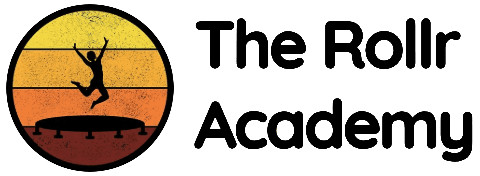Common Rhotacism Examples in Everyday Speech
Rhotacism examples help illustrate how this speech pattern affects daily communication. Understanding these examples can help identify rhotacism and recognize when professional help may be beneficial.
Correct: "Rabbit"
Rhotacism: "Wabbit"
Correct: "Red"
Rhotacism: "Wed"
Correct: "Car"
Rhotacism: "Cah"
Correct: "Tree"
Rhotacism: "Twee"
Correct: "Right"
Rhotacism: "Wight" or "Light"
Correct: "Water"
Rhotacism: "Watah" or "Watuh"
Famous Rhotacism Example: Elmer Fudd
The most well-known rhotacism example in popular culture is Elmer Fudd from Looney Tunes cartoons. This character was specifically designed to demonstrate rhotacism speech patterns, making him instantly recognizable to audiences.
Elmer Fudd's Famous Lines:
- "Be vewy, vewy quiet... I'm hunting wabbits!" (Instead of "very, very quiet... rabbits")
- "You wascally wabbit!" (Instead of "rascally rabbit")
- "Wabbit season!" (Instead of "rabbit season")
Elmer Fudd's character helped bring awareness to rhotacism, though it's important to note that in real life, this speech pattern can cause significant challenges for those who experience it.
Rhotacism Examples by Type
Different types of rhotacism create distinct pronunciation patterns. Here are examples organized by the most common substitution types:
W/R Substitution Examples (Most Common)
- Run → "Wun"
- Ring → "Wing"
- River → "Wiver"
- Around → "Awound"
- Project → "Pwoject"
- Brown → "Bwown"
- Free → "Fwee"
L/R Substitution Examples
- Room → "Loom"
- Road → "Load"
- Rice → "Lice"
- Really → "Leally"
- Story → "Stoly"
- Grocery → "Glocely"
Vocalic R Examples (R-colored vowels)
- Bird → "Buhd" or "Bid"
- Butter → "Buttah" or "Buttuh"
- Sister → "Sistah" or "Sistuh"
- Paper → "Papah" or "Papuh"
- Here → "Heah" or "Hee-uh"
- Fair → "Fayuh" or "Fay"
R-Blend Examples in Rhotacism
R-blends (consonant clusters with R) are often particularly challenging for people with rhotacism. Here are common examples:
BR Blend Examples:
- Bread → "Bwead" or "Blead"
- Bridge → "Bwidge" or "Blidge"
- Broken → "Bwoken" or "Bloken"
CR Blend Examples:
- Cry → "Cwy" or "Cly"
- Cross → "Cwoss" or "Closs"
- Crown → "Cwown" or "Clown"
GR Blend Examples:
- Green → "Gween" or "Gleen"
- Great → "Gweat" or "Gleat"
- Grow → "Gwow" or "Glow"
TR Blend Examples:
- Train → "Twain" or "Tlain"
- True → "Twue" or "Tlue"
- Truck → "Twuck" or "Tluck"
Real-Life Impact of These Examples
While these rhotacism examples might seem amusing in cartoons, they represent real challenges for millions of people:
Professional Situations:
- Difficulty saying company names like "Microsoft" or "Rogers"
- Challenges with job titles like "Director" or "Administrator"
- Problems with technical terms containing R sounds
Social Situations:
- Avoiding restaurants with R in their names
- Difficulty with personal names and locations
- Self-consciousness about ordering foods like "burger" or "ribs"
Educational Context:
- Reluctance to read aloud in class
- Challenges with subjects heavy in R-containing vocabulary
- Impact on language learning and pronunciation
Important Note:
These rhotacism examples demonstrate a real speech challenge that affects communication and confidence. Unlike Elmer Fudd's cartoon portrayal, rhotacism in real life benefits from understanding, support, and appropriate treatment when desired.
Recognize These Examples in Your Own Speech?
Take our comprehensive assessment to identify your specific R sound patterns and discover personalized solutions.
Understanding Your Own Patterns
If you recognize your speech patterns in these rhotacism examples, you're not alone. Millions of people worldwide experience similar R sound difficulties. The good news is that with modern techniques and consistent practice, these patterns can be improved at any age.
Professional speech therapy and innovative technology solutions can help you:
- Identify your specific rhotacism patterns
- Learn proper R sound placement and production
- Practice with personalized feedback and support
- Build confidence in your communication abilities
Remember, seeking help for rhotacism is a positive step toward clearer communication and increased confidence in all areas of life.

